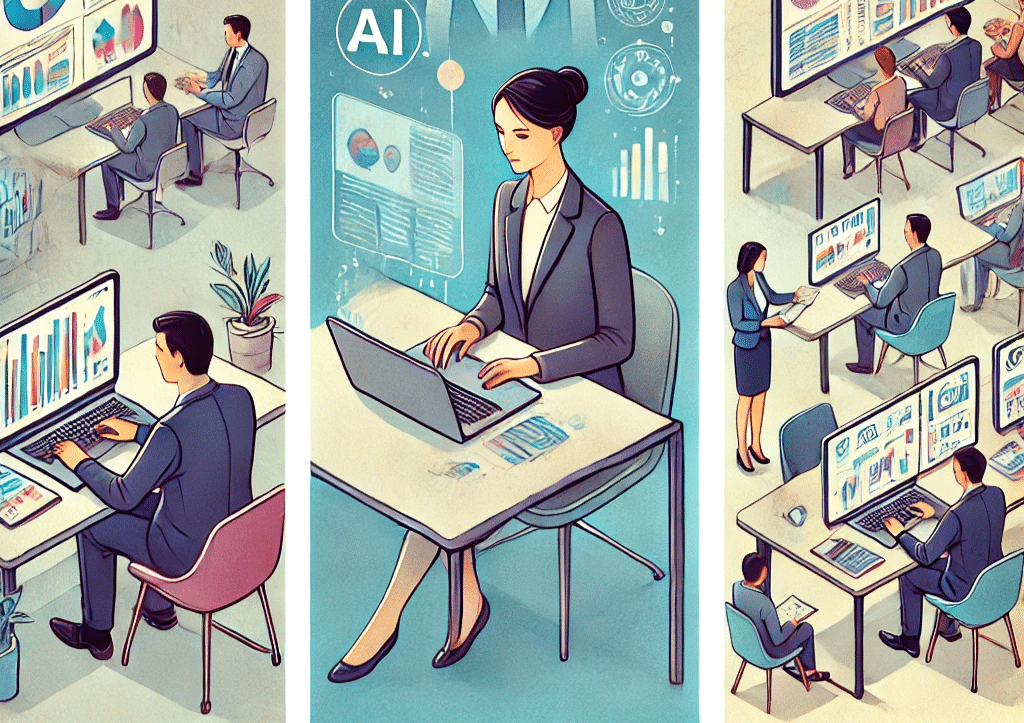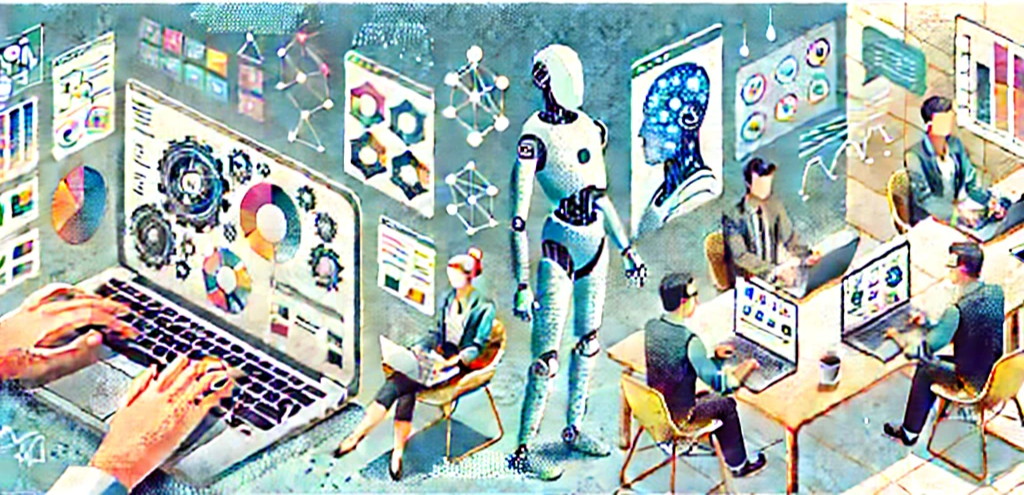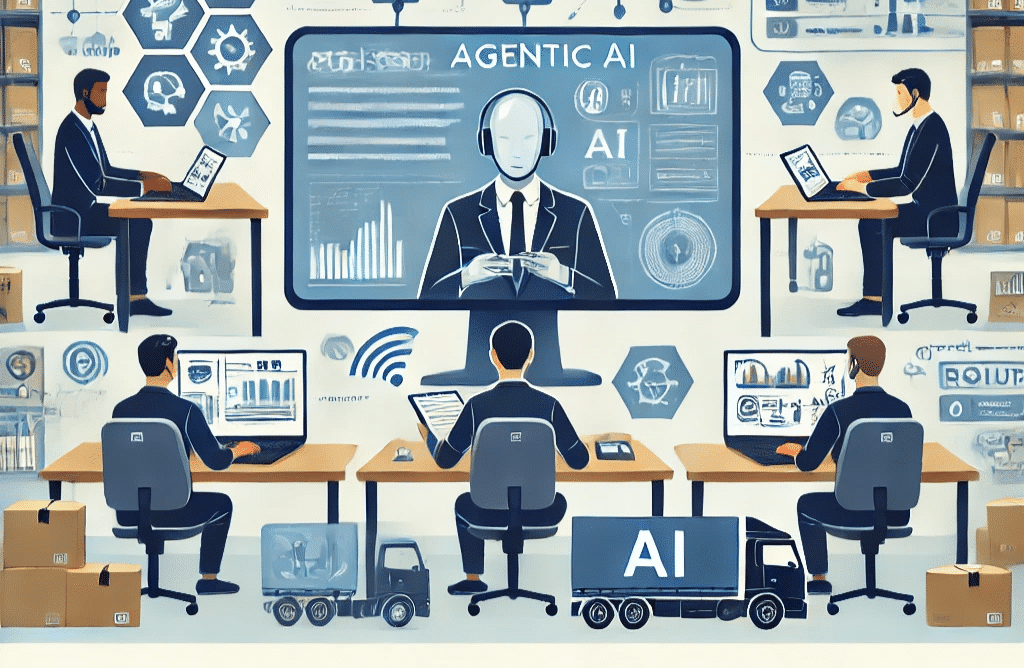For SMEs, the real impact of agentic AI is unlikely to come from deploying independent agents of their own. Instead, it will arrive as part of the business software they already rely on, from accounting platforms to customer relationship tools.
Understanding Agentic AI: The Future of Intelligent Systems
Artificial intelligence has already reshaped industries, from predictive systems that forecast demand to generative tools that produce text, images, and code. A new wave is now emerging: agentic AI. Unlike earlier systems that focus on analysing data or generating outputs, these agents can make decisions, adapt to changing conditions, and act on goals with minimal human input. This shift is drawing attention from businesses seeking efficiency, regulators exploring oversight, and researchers testing the boundaries of autonomy. The rise of agentic AI is not just another step in automation but a potential redefinition of how organisations operate.
What is Agentic AI?
Agentic AI describes systems that operate with a degree of autonomy. They can pursue goals, adapt to their environment, and make decisions without constant human guidance. Predictive AI focuses on forecasting outcomes. Generative AI creates new content. Agentic AI goes further by initiating actions and handling multi-step processes.
As OpenAI noted in its 2024 research on the shift from models to agents, this development represents a move away from AI as passive tools and toward AI that functions more like independent partners.

Key Characteristics of Agentic AI
Agentic AI can usually be defined by three core traits.
Autonomy is its defining quality. Agentic systems can act without constant human supervision, processing information and responding in real time. This independence allows them to handle complex tasks faster and more efficiently than traditional AI.
Goal-directed behaviour takes autonomy a step further. Instead of simply following programmed instructions, agentic AI can set priorities, weigh options, and adjust objectives as circumstances change. It behaves less like a calculator and more like a partner working toward outcomes.
Adaptability ensures that agentic AI does not remain static. These systems learn continuously from new data and past experiences. They refine their strategies over time, becoming more effective and resilient in dynamic environments.
Autonomy
Goal-directed behaviour.
Adaptability
Distinguishing Agentic AI from Existing Models
Predictive AI is strong at spotting patterns but lacks independence. Generative AI can create content but is usually confined within narrow parameters. Agentic AI blends both and adds autonomy. This means it can run processes end to end, even managing workflows or routing tasks between teams.
This is why organisations are starting to treat agentic AI as a managerial technology rather than just an analytical one.
Applications and Use Cases
The potential of Agentic AI is significant across industries.
Corporate operations
Salesforce has deployed its agentic AI system, Agentforce, to support its 500-strong global legal team. The AI helps answer staff queries about agreements, route enquiries, and even negotiate certain contracts. Salesforce estimates it will save about 9,500 hours of staff time annually on compliance and risk tasks. Yet lawyers still review its work, showing how oversight remains critical (Financial Times, 2025).
Legal and compliance
A wave of new providers is emerging that specialise in applying agentic AI to law and regulation. Some focus on contract drafting and review, enabling companies to process large volumes of agreements with far less manual effort. Others concentrate on compliance automation, building systems that check company policies against evolving regulations and flag potential risks in real time. There are also firms working on due diligence, where agentic AI analyses past transactions or regulatory filings and identifies patterns that human reviewers might miss.
Healthcare
The potential of agentic AI in medicine goes beyond isolated automation. Imagine a hospital where an agentic system monitors patients around the clock, drawing on data from wearable devices, bedside sensors, and electronic health records. Instead of waiting for periodic check-ups, the system could continuously track vital signs, spot early warning signals of deterioration, and alert clinicians before a crisis occurs. For patients with chronic conditions such as diabetes, an agentic AI could adjust insulin recommendations in real time, taking into account glucose data, diet logs, and even daily activity levels.
Supply chains
In global trade and manufacturing, Agentic AI offers the ability to act as an intelligent coordinator. Traditional supply chain software relies heavily on static rules and scheduled updates, which makes it slow to react when unexpected events occur. By contrast, an Agentic system can detect disruptions such as a port closure, a sudden spike in demand, or a shortage of raw materials, and then autonomously reroute shipments, adjust production schedules, or reprioritise supplier orders. For example, if a natural disaster cuts off a key route, the AI could instantly reallocate shipments through alternative hubs and recalculate delivery times for customers.
Simple, clear procedures are more likely to be followed. They also encourage feedback from team members who use them daily, helping you improve them continuously.

Opportunities and Challenges
The opportunities are clear. Agentic AI can free employees from repetitive tasks, boost efficiency, and speed up decision-making. It can even take on a “managerial” role, assigning tasks to the right teams.
But the challenges are equally significant. Autonomy raises questions of responsibility. If an AI system makes a mistake, who is accountable: the vendor, the company, or the end-user? IDC and Gartner both caution that adoption remains limited, with fewer than 1 per cent of the world’s top 5,000 companies currently using agentic AI in legal work (Financial Times, 2025).
Ethical governance and regulatory oversight will therefore be central. The EU’s forthcoming AI Act, for instance, underscores the need for transparency and human responsibility in deploying autonomous systems.
How Agentic AI May Reach SMEs
For SMEs, the real impact of agentic AI is unlikely to come from deploying independent agents of their own. Instead, it will arrive as part of the business software they already rely on, from accounting platforms to customer relationship tools. This means the effect may be delayed compared with large enterprises, but once these capabilities are embedded, the transformation could be just as powerful. By quietly reducing administrative burdens and streamlining operations, agentic AI can give smaller firms enterprise-level efficiency without the need for heavy new investment.





